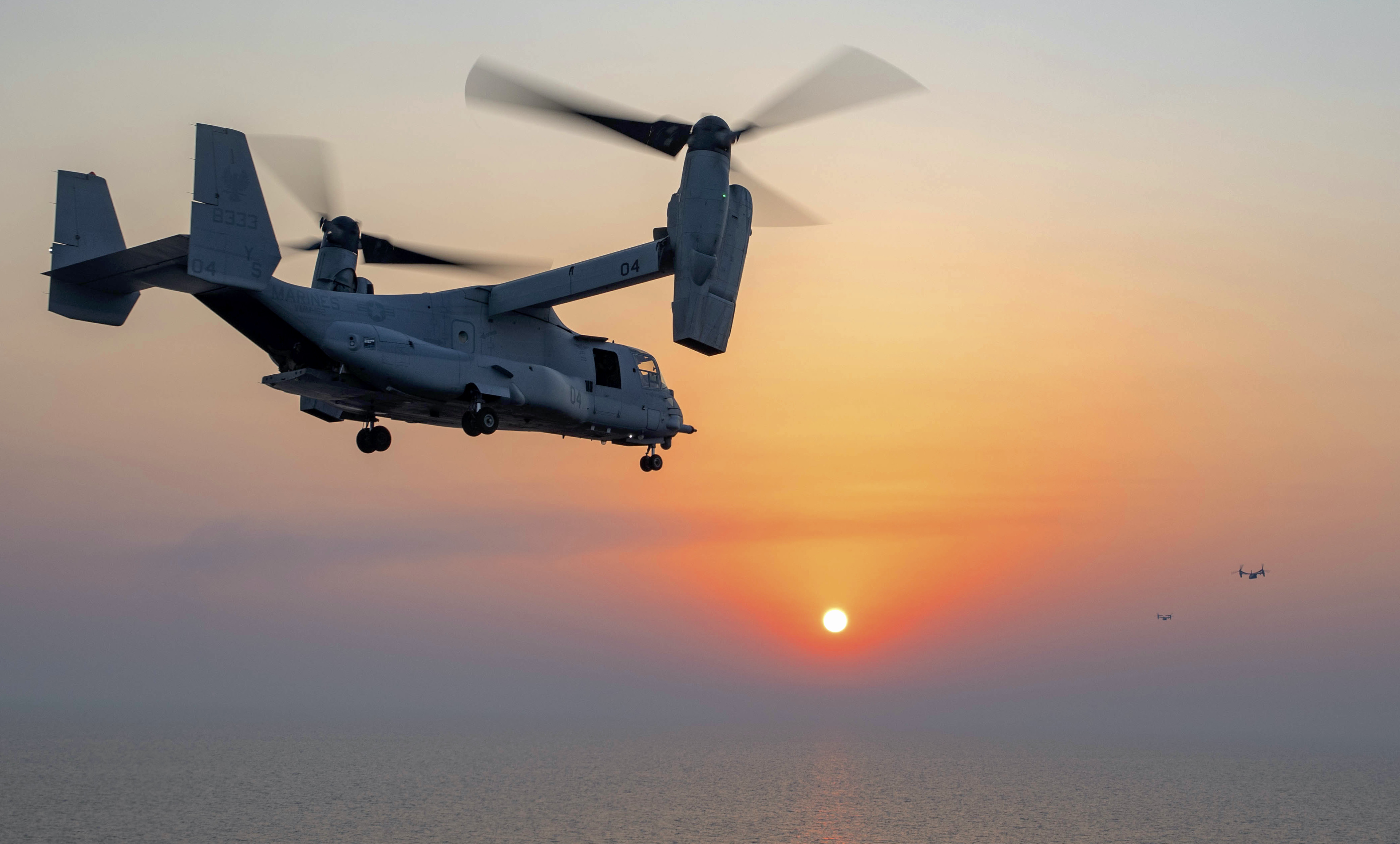An MV-22B Osprey, attached to Marine Medium Tiltrotor Squadron (VMM) 162 (Reinforced), takes off from the flight deck of the Wasp-class amphibious assault ship USS Iwo Jima (LHD-7) during routine flight operations on Aug. 25, 2021. US Navy Photo
The three services that fly the V-22 Osprey last week grounded some of their fleets due to ongoing issues with the tilt-rotor aircraft’s hard clutch.
In a memo, the Navy, Air Force, and Marine Corps established a flight hour maximum for the aircraft’s input quill assembly that will halt operations for some V-22s, the Marine Corps announced in a news release on Saturday evening.
“Based on the recommendation from the V-22 Joint Program Office, the U.S. Marine Corps, U.S. Air Force Special Operations Command and U.S. Navy issued a time limit, via fleet bulletin, on the V-22 Input Quill Assembly, effective Feb. 3, 2023,” the news release reads.
“The imposed time limit will restrict flight on a subset of V-22s until the Input Quill Assembly is replaced. The Input Quill Assembly is an element of the proprotor gearbox, which houses the aircraft clutch.”
The Marine Corps declined to detail the flight hour maximum, citing “operational security concerns,” but said it’s evaluating 24 different efforts to address the hard clutch issue. The service also did not detail how many Ospreys are grounded as a result of the guidance.
“The fleet bulletin identifies aircraft with Input Quill Assemblies above a predetermined flight-hour threshold and the requirement to replace that component. Once replaced, the aircraft will return to flight status,” the release reads.
The grounding comes after the Air Force last year grounded its CV-22 Osprey fleet due to ongoing problems with the hard clutch. At the time, the Navy and Marine Corps opted not to ground their respective fleets.
The hard clutch issue happens during takeoff when “the clutch driven by the engine, releases from the rotor system and suddenly reengages, sending an impulse through the drive train, potentially causing damage,” according to the Marine Corps release.
While the Marine Corps and Air Force have been flying their Ospreys for years, the Navy only started deploying its CMV-22Bs in 2021.
“The hard clutch issue has been known to the Marine Corps since 2010, and as such, we have trained our pilots to react with the appropriate emergency control measures should the issue arise during flight. We also remain engaged with the Joint Program Office, NAVAIR engineering, and our industry partners to resolve the issue at the root cause,” Maj. Jim Stenger, a Marine Corps spokesman, said in an August statement following the Air Force’s decision.
“By virtue of these measures, the Marine Corps has accumulated over 533,000 MV-22 flight hours without a single catastrophic event contributed to this hazard. The Deputy Commandant for Aviation has also issued interim guidance to the Fleet Marine Forces implementing a procedure to help in the early recognition of a pending hard clutch engagement. Additionally, we will continue to proactively communicate our ongoing efforts with the men and women who fly and maintain our aircraft. They deserve nothing less.”
Officials told reporters in August that no injuries have happened as a result of the hard clutch issue.











No comments:
Post a Comment
How did you like the post, leave a comment. I would appreciate hearing from you all. Best wishes from JC's Naval, Maritime and Military News